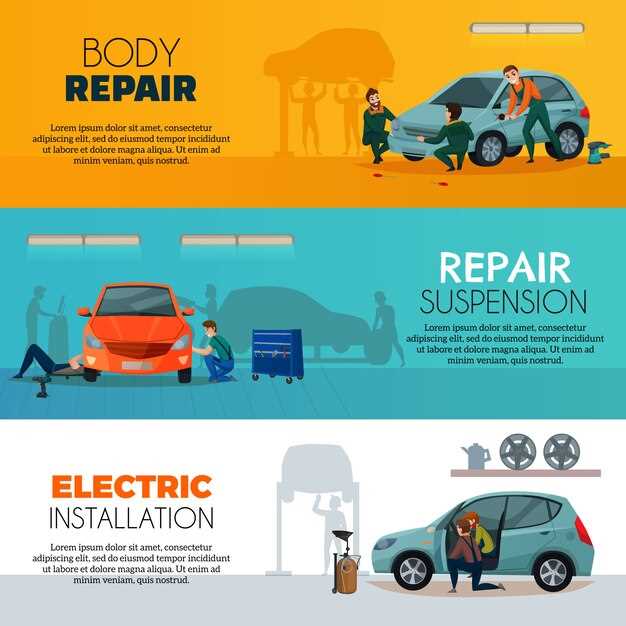
How to diagnose electrical issues in your car
- Dominique Kaye
- 0
- Posted on

Understanding the electrical systems in your car is essential for effective troubleshooting. Vehicles today rely heavily on complex electrical components to function optimally. From the battery to the ignition system, each part plays a crucial role. Recognizing the symptoms of electrical issues can save you time and money on repairs.
Electrical problems can manifest in various ways, often leading to frustration for drivers. Common symptoms include flickering lights, malfunctioning windows, or difficulties starting the engine. These signs might seem minor at first, but they can indicate deeper issues within the vehicle’s electrical system.
To accurately diagnose electrical problems in your car, it’s important to approach the situation methodically. This article will guide you through the diagnostic process, helping you identify possible faults and determine whether a professional mechanic is needed. Understanding these symptoms will empower you to take proactive measures for your vehicle’s maintenance.
Identifying Common Symptoms of Electrical Issues
When dealing with a car’s electrical system, recognizing the symptoms of potential problems is crucial for timely diagnosis and repair. Common signs of electrical issues can save you from more severe malfunctions down the road.
1. Dim or Flickering Lights: One of the first indicators of electrical trouble is when headlights, dashboard lights, or interior lights appear dim or flicker. This may point to a failing alternator or dead battery, as these components are vital for providing consistent power.
2. Difficulty Starting the Engine: If your car struggles to start or the engine makes a clicking sound when you turn the key, it often signifies a problem with the electrical system. This could be related to a weak battery, corroded battery terminals, or an issue with the starter motor.
3. Warning Lights on the Dashboard: Modern vehicles are equipped with warning lights for various issues, including electrical malfunctions. If the battery or check engine light illuminates, it is essential to investigate further, as these indicate potential electrical problems.
4. Electrical Accessories Malfunctioning: If components such as power windows, door locks, or radio are unresponsive or operate intermittently, it may indicate faulty wiring or problems with the related fuses. Regularly check the functionality of these accessories to catch issues early.
5. Unusual Smells or Sounds: Strange odors, such as burning plastic or wires, can indicate overheating electrical components or short circuits. Additionally, listen for odd noises, such as buzzing or crackling, which may suggest electrical faults under the hood.
6. Frequent Blown Fuses: A blown fuse indicates that an electrical circuit is overloaded or shorted. If you find yourself replacing fuses often, it’s a clear sign of an underlying electrical issue that requires further investigation.
Addressing these symptoms promptly can help you avoid more significant repairs and ensure your vehicle’s electrical system remains in optimal condition.
Using Tools to Test Electrical Components

Diagnosing electrical problems in your car requires the right tools to accurately evaluate and troubleshoot components. One of the most essential devices is a multimeter, which measures voltage, current, and resistance. With a multimeter, you can test battery voltage to ensure it is functioning correctly and determine if the alternator is charging properly.
Another valuable tool is the test light. This simple device can quickly identify whether electrical circuits are live. If you suspect a problem with a fuse, a test light can help you confirm whether or not power is reaching specific components, enabling efficient problem-solving.
For more detailed analysis, consider using an oscilloscope. This tool allows you to visualize electrical signals, which can be particularly helpful for diagnosing more complex issues with system components, such as sensors and actuators. It can help identify signal irregularities that might indicate underlying problems.
Additionally, a wiring diagram is a crucial reference tool. It helps you understand the layout and connections of your car’s electrical system. By consulting the diagram, you can verify that you are testing the correct components and that wiring connections are intact.
Lastly, always ensure to have a circuit tester on hand. This tool can check for continuity in circuits, providing insight into whether wires and connections are functioning as they should. By using these tools effectively, you can diagnose and resolve electrical problems with greater accuracy.
Steps to Isolate and Fix Specific Electrical Faults

Diagnosing electrical problems in your car requires a systematic approach to effectively isolate and resolve specific faults. Begin by gathering necessary tools, including a multimeter, basic hand tools, and wiring diagrams for your vehicle’s electrical systems.
1. Identify Symptoms: Take note of any warning lights on the dashboard, unusual sounds, or electrical components malfunctioning. Understanding the exact symptoms will guide your diagnostic process.
2. Check Battery Health: Start by inspecting the battery voltage. A reading below 12.4 volts indicates the battery may be weak or discharged, potentially causing various electrical issues. Additionally, look for corrosion on terminals and connectors.
3. Examine Fuses: Locate the fuse box and check for blown fuses. A blown fuse often points to a circuit overload or short. Replace any faulty fuses and monitor for reoccurrence to determine if further investigation is needed.
4. Test Ground Connections: Poor ground connections can lead to various electrical malfunctions. Use a multimeter to test ground points for continuity. Clean or repair any corroded grounds to ensure a proper electrical connection.
5. Inspect Wiring: Examine wiring harnesses for signs of wear, fraying, or damage. Wiggle the wires while testing specific components to see if they respond, indicating a possible broken wire or loose connection.
6. Check Components Individually: When specific components fail, such as lights or motors, use a multimeter to check their voltage and resistance. Compare these readings against manufacturer specifications to verify functionality.
7. Use Diagnostic Tools: If your vehicle is equipped with an onboard diagnostics (OBD-II) system, use a scanner to retrieve error codes. These codes can indicate the source of electrical problems and assist you in narrowing down faults.
8. Repair or Replace Faulty Parts: Once the source of the electrical problem is isolated, decide whether repair or replacement is the best course of action. Follow proper procedures for any replacement components to ensure compatibility and reliability.
9. Test the Circuit: After repairs, always test the circuit to confirm the fix resolves the issue. Monitor the component for functionality over time to ensure the problem does not reoccur.
By following these steps, you can effectively isolate and fix specific electrical faults in your vehicle, enhancing its performance and reliability.
